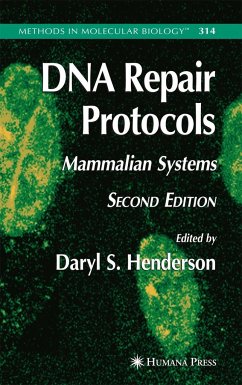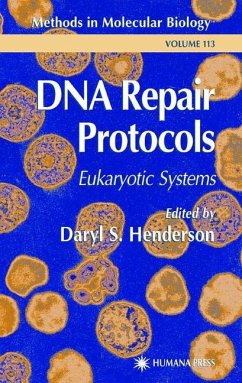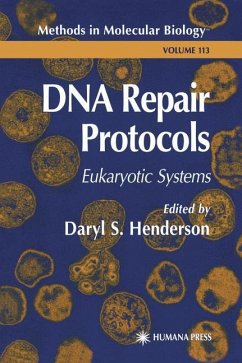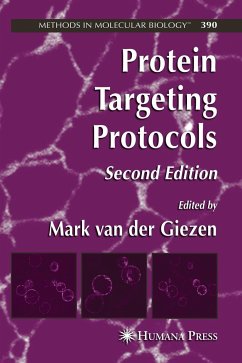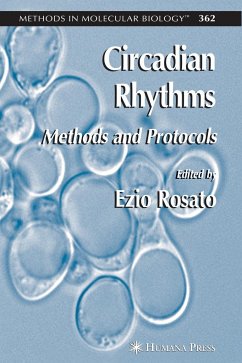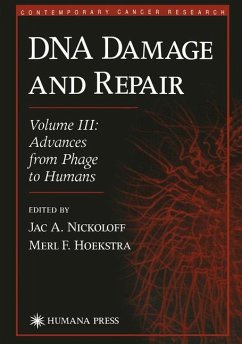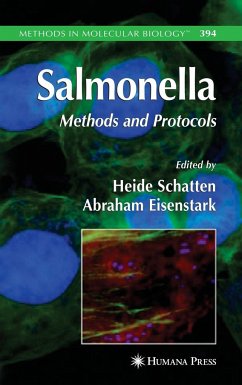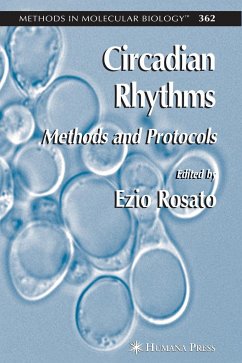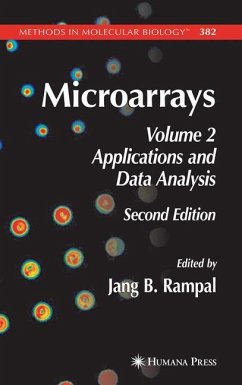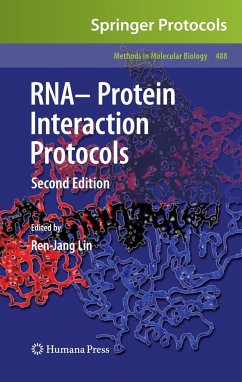
DNA Repair Protocols
Eukaryotic Systems
Herausgegeben: Henderson, Daryl S.
Versandkostenfrei!
Versandfertig in über 4 Wochen
157,99 €
inkl. MwSt.
Weitere Ausgaben:

PAYBACK Punkte
79 °P sammeln!
In DNA Repair Protocols: Eukaryotic Systems, Daryl S. Henderson and a team of hands-on experts give time-tested instructions for analyzing a wide range of DNA repair processes and cellular responses to DNA damage, including nucleotide and base excision repair, DNA strand break repair, and mismatch repair. The methods focus on eukaryotic model systems that have made, or have the potential to make, important contributions to our understanding of cellular responses to DNA damage in relation to mutagenesis, carcinogenesis, and the cell cycle. Although mammalian cells predominate, consideration is ...
In DNA Repair Protocols: Eukaryotic Systems, Daryl S. Henderson and a team of hands-on experts give time-tested instructions for analyzing a wide range of DNA repair processes and cellular responses to DNA damage, including nucleotide and base excision repair, DNA strand break repair, and mismatch repair. The methods focus on eukaryotic model systems that have made, or have the potential to make, important contributions to our understanding of cellular responses to DNA damage in relation to mutagenesis, carcinogenesis, and the cell cycle. Although mammalian cells predominate, consideration is also given to such important nonmammalian model systems as yeast, C. elegans (nematode), Drosophila (fruitfly), Xenopus (amphibian), and plants.
DNA Repair Protocols: Eukaryotic Systems offers the most comprehensive collection of DNA repair protocols available, all step-by-step, optimized, and eminently reproducible with tips on troubleshooting and avoiding pitfalls. It will serve asthe gold-standard reference for both the practical and theoretical aspects of DNA repair studies, encourage the transfer of methodologies between model systems, and stimulate the development of new approaches.
DNA Repair Protocols: Eukaryotic Systems offers the most comprehensive collection of DNA repair protocols available, all step-by-step, optimized, and eminently reproducible with tips on troubleshooting and avoiding pitfalls. It will serve asthe gold-standard reference for both the practical and theoretical aspects of DNA repair studies, encourage the transfer of methodologies between model systems, and stimulate the development of new approaches.





